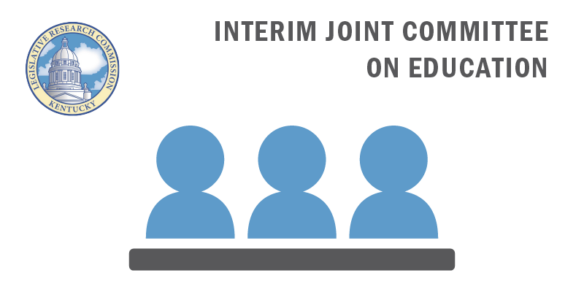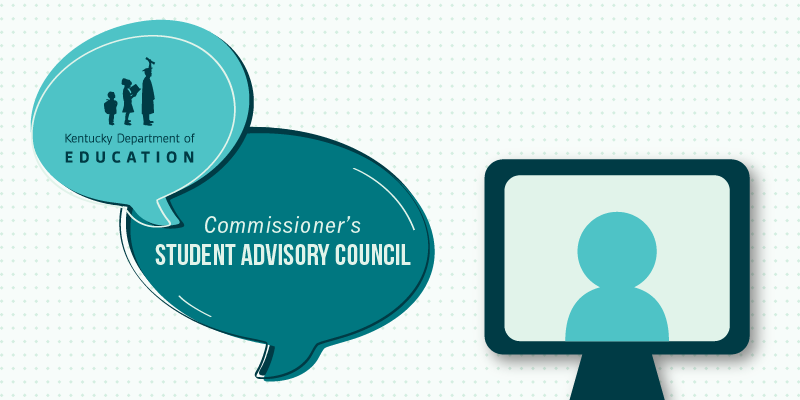 (FRANKFORT, KY) – Leaders of the Kentucky Department of Education (KDE) presented data on Kentucky’s teacher shortage to state lawmakers on the Interim Joint Committee on Education on Oct. 15.
(FRANKFORT, KY) – Leaders of the Kentucky Department of Education (KDE) presented data on Kentucky’s teacher shortage to state lawmakers on the Interim Joint Committee on Education on Oct. 15.
Kentucky schools report job vacancy information to the Kentucky Educator Placement Service (KEPS). KDE is required to maintain KEPS in accordance with KRS 160.152(2).
Commissioner of Education Robbie Fletcher said the KEPS data is flawed for multiple reasons and recommended a few actions to ensure better data moving forward:
- Fund a statewide application system that is designed to provide the desired data with the benefit of allowing district leaders to deepen their applicant pools; and/or
- Conduct an annual survey with districts regarding vacancy data.
Currently, superintendents are required to submit district vacancies to KEPS 15 days before the position can be filled. Fletcher stated, “One of the key issues with KEPS as it relates to the teacher shortage is that districts are not required to update postings when they’re filled, which creates a discrepancy between postings and actual vacancies. There are also differences in how districts handle vacancies that hinder the ability to draw conclusions from the information provided by KEPS on a statewide basis.”
To get more accurate real-time data, KDE conducted an educator shortage survey this fall across all 171 public school districts and state-run schools.
“We want to make sure we get you the best data possible so you can make the best decisions for kids and for our educators,” Fletcher added.
Some key points from KDE’s educator shortage survey:
- For the 2023-2024 school year, 13% of all vacancies across Kentucky remained unfilled for the entire school year.
- The majority of districts – 116 – reported fewer than 10 vacancies as of Sept. 1. On the other end of the spectrum, three districts had more than 75 vacancies.
- As of Sept. 1, 1,766 vacant classified support staff positions were reported. There were 447 vacant licensed educator positions, 363 vacant special education and early childhood teaching positions, 889 vacant general teaching positions and 64 school-level administrative positions.
- District leaders indicated that they felt the quality of applicants for positions during the 2024-2025 school year were either of similar quality (49%) or lower quality (42%) to candidates from the previous year.
Only one district reported being fully staffed as of Sept. 1: Science Hill Independent, a district in Pulaski County with one school serving 442 students in preschool through 8th grade.
Fletcher disclosed that the survey also asked what districts are doing to deal with general teaching vacancies, and the top three responses were using substitute teachers, using retired teachers and increasing class sizes.
“Districts are compensating and trying to make sure that they address those classrooms that are not covered by teachers by increasing class sizes in some cases,” Fletcher said. “In other cases, they are eliminating courses. We do not want to eliminate opportunities for our kids, but when you don’t have teachers in the classroom, that’s one of the things that we have to do to provide educational services with less-than-optimal class sizes.”
Districts also reported using administrators to cover classes, reducing teacher planning periods, and offering virtual options to deal with their teacher shortages. Some districts reported outsourcing to other agencies to help find qualified people to fill vacancies.
According to the data supplied by Fletcher and his team, special education and early childhood educator shortages are a significant issue. The survey results indicate that as of Sept. 1, there are 216 open learning behavior specialist positions, 74 vacant positions for moderate and severe disabilities teachers and 42 vacancies for early childhood educators.
“You’ll see a lot of the same (remedies) for special education that you’re going to see for general education classes,” Fletcher said. “Sometimes we have to increase class sizes, and with some of the most vulnerable students that we have, … to the point where sometimes we’re increasing the course loads for a special education teacher.”
School psychologists and speech therapists have the highest shortage rates among licensed professionals working in schools. Districts reported needing 44 speech pathologists or therapists as of Sept. 1 and 43 school psychologists.
Schools also struggle to find bus drivers and teaching aides to support their students. As of Sept. 1, districts reported 480 open teaching aide positions, 339 open positions for bus drivers, 260 open food service positions and 215 open custodial positions. Approximately 29% of all support staff vacancies in the 2023-2024 school year went unfilled.
“We have several certified teachers across the state that may miss their planning period at the end of the day because they have to do as a bus route,” Fletcher said. “We also have some (districts) where you have to combine bus routes. That means kids are getting home later.”
Fletcher noted some districts are helping each other by sharing employees and other resources to cover vacant positions.
“It’s about trying to make sure our kids get the services they need as opposed to a competition among districts,” he said.
Statewide, districts reported vacancies among school-level administrative positions were largely filled as of the beginning of the current school year.
Assessment and Accountability
Fletcher and leaders from the KDE Office of Assessment and Accountability also shared Kentucky’s assessment and accountability data for the 2023-2024 school year, which was release publicly on Oct. 3 as required by state statute and the federal Every Student Succeeds Act.
This is the second year the current accountability system, with status and change as ways to evaluate state indicators, has been in full implementation. Status represents a school’s performance on a state indicator for the current year, while change represents the school’s performance on the indicator for the current year compared with the previous year. Status and change combine to provide a performance rating for each state indicator.
“There are some areas of success, but there’s also areas for work,” Fletcher said.
KDE leaders shared some of the efforts department staff have made to improve assessment scores, including content area support with high-quality instruction resources and high-quality professional learning like the Language Essentials for Teachers of Reading and Spelling (LETRS) training through the Kentucky Reading Academies.
Rhonda Sims, associate commissioner in the KDE Office of Assessment and Accountability, told committee members that she appreciated efforts and funding to support improvement efforts like the LETRS training.
“We hear anecdotally that people feel that it’s making a real difference in student performance, but remember that it takes some time to show up in state assessment results,” Sims said.
Sims said the department has also hired Jennifer Fraley as the new director of mathematics education, who will implement several strategies to address numeracy education in conjunction with House Bill 162 (2024), the Kentucky Numeracy Counts Act, along with developing statewide supports for mathematics teaching and learning.
“The partnership that KDE has with our legislative body to focus on numeracy, to focus on literacy is extremely important, and we value that, and we want to move forward with that,” Fletcher said. “And we hope and we believe that as we move forward, you’ll see better results, especially in reading and mathematics.”
Fletcher said KDE is also taking steps to address the teacher shortage, which does affect the environment around assessment and accountability, including a public messaging campaign to recruit more people into becoming teachers.
Among the questions from lawmakers, Education Committee Chairman Rep. James Tipton asked Fletcher about how concerned he was with science scores and what ways can that be improved.
Fletcher said we must make sure content is being taught and assessed in the appropriate way, but teachers should be brought in to evaluate the assessment itself to make sure it aligns with what is being taught in the classrooms.
“It also takes a lot of self-reflection: how do we get that professional development out to teachers to help them?” Fletcher said. “How do we get out that information to them to help train teachers to (reach) the level where we want them to be?”
Rep. Kevin Jackson questioned why Kentucky’s assessment and accountability system is more focused on comparing the change between the last two academic years rather than student growth. Fletcher said the department is actively working on a proposal to incorporate that idea into a new assessment and accountability system, which would require legislative approval.
KDE and the Kentucky United We Learn Council have been working on prototypes for a reimagined assessment and accountability system that will prioritize innovation, personalization, local community and student voice, and the incorporation of vibrant learning experiences. “The department recently administered a stakeholder feedback survey,” said Fletcher. “A large majority of respondents indicated they favored a model based on measuring student growth.”
“When I say student growth, I’m not just talking about those students that may need remediation; I’m talking about those students that need enrichment that we need to push,” Fletcher added. “A student growth system focuses on where you started with the child and where did you take him or her.”
The goal of the Kentucky United We Learn Council’s wide-ranging, public-driven efforts will be to have a finalized assessment and accountability proposal for the Kentucky General Assembly to consider as early as the 2026 legislative session.



Leave A Comment